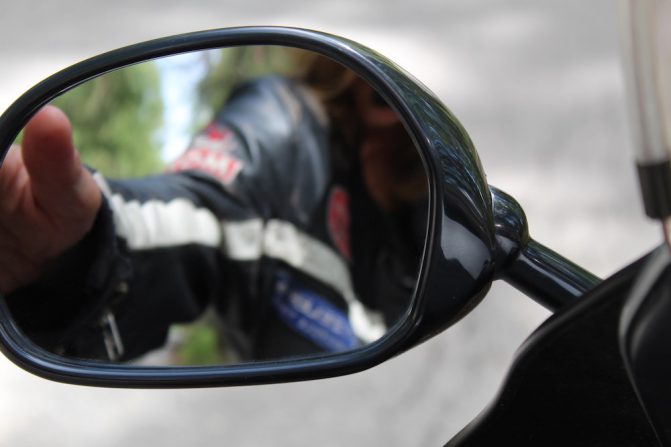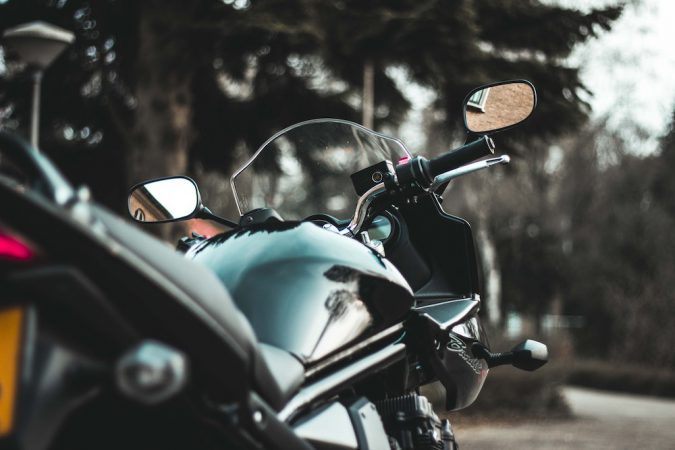Your motorcycle is only as reliable as your maintenance routine. Regular repairs and inspections will extend your motorcycle’s working life to 100,000 miles, and neglecting your duties will cut its life drastically short. Proper care also reduces your risk of getting stranded by the side of the road waiting for AAA, which can be grueling if not dangerous without a roof over your head. From not maintaining your motorcycle safety gear to keeping your routine in first gear, avoid these common motorcycle maintenance mistakes to preserve your ride for years to come.
1. Not Consulting Your Owner’s Manual
Some riders stick their owner’s manual in a drawer and never look at it again, but this essential guide contains nearly everything you need to know about the bike. The internet is full of motorcycle forums and tips, but not adhering to the instructions could worsen the problem or void your warranty.
Solution: Read the Instructions
Every step you take to maintain your motorcycle should come directly from the manufacturer’s recommendations. Keep a copy on hand in case you can’t bring it up on your phone. Refer to the suggested maintenance timeline when scheduling inspections and repairs. Use the engine oil, filter, coolant and lubricant brands recommended in the manual. If you can’t find the answer to your question, consult a licensed mechanic before going off-script.
2. Not Adjusting the Frequency of Your Maintenance Routine
Motorcycle maintenance includes checking and changing your fluids, changing filters, charging the battery, inspecting exposed joints for rust, lubricating the chain, adjusting tire pressure and cleaning the exterior. It’s best to do a simple check before each ride, and experts recommend getting it serviced every 4,000 miles or six months. Most riders spend between $800 and $1,500 a year on repairs.
But sticking to the same schedule year after year can blind you to growing problems. Aging bikes need more frequent inspections and repairs. Riding uphill or with a passenger and cargo strains the gears and engine. A problem with the fuel, oil or coolant system can quickly spread to other areas when left unaddressed — even if your next service appointment is several months away. Neglected roads and extreme temperatures can precipitate problems sooner than expected.
Solution: Update Your Schedule as Needed
Adjust your maintenance routine to meet the moment based on your motorcycle’s performance. Increase the frequency of your inspections as the bike ages or when efficiency or power decreases. Listen for unfamiliar sounds when starting, accelerating or braking; look for tension or friction when changing gears; and watch for smoke from the tailpipe.
3. Not Using Wireless Communication
Nothing ruins a group ride like a motorcycle meltdown. If your bike suddenly loses power, something comes loose or your tire goes flat, you risk getting left behind while the rest of your crew drives on. Pulling over on the side of the highway to address the issue is extremely dangerous.
Solution: Attach a Wireless Headset to Your Helmet
Use a motorcycle intercom to communicate with your peers hands-free while troubleshooting the issue. You can consult them for advice on what to do and slow down as a group until you find a safe place to stop. Using a Bluetooth headset keeps your hands on the handlebars and eyes on the road. Just speak to the receiver to start a conversation or call for help.
Find motorcycle headsets that connect automatically when in range so you don’t have to touch the device. It should create a direct link between each rider instead of forming a chain to keep the group connected regardless of formation. The latest models include crash protection and will report the incident to the authorities if you suddenly come to a halt.
Source: kasarp studio/Shutterstock.com
4. Neglecting Motorcycle Safety Equipment
Your motorcycle gear is vulnerable to wear and tear and will no longer be effective after several years of regular use. Helmets should be replaced every five years or after they’ve been involved in an accident — even if they appear intact. Gloves lose their grip, and boots lose their tread, making it harder to control the bike.
Solution: Include Your Gear in Inspections
Review your gloves, boots, helmet, headset and other accessories to ensure they’re firmly attached and offer sufficient protection. They should stay firmly in place and fully cover the area underneath. Replace any items with holes, weak spots, dents and those that no longer fit.
5. Not Charging the Battery
One of the biggest mistakes you can make is assuming your motorcycle will produce enough power to charge the battery. In reality, the bike only generates a charge at high RPMs. Idling and trips around town do little to resupply the battery, leading to a weaker charge.
Solution: Charge the Battery Separately
Use a separate wall charger to plug the battery into an outlet when it’s not in use. Limit the amperage to avoid overheating the battery. Insulate it from the cold during the winter to keep the circuits flowing.
Your Motorcycle Maintenance To-Do List
A bike can go from like-new to poor condition in a few rides. Temperature changes, unauthorized maintenance, road conditions and mistakes at the wheel can throw your maintenance routine out the window, requiring more frequent check-ups. Rethink your approach to preserving your ride to keep the effects of time at bay.


